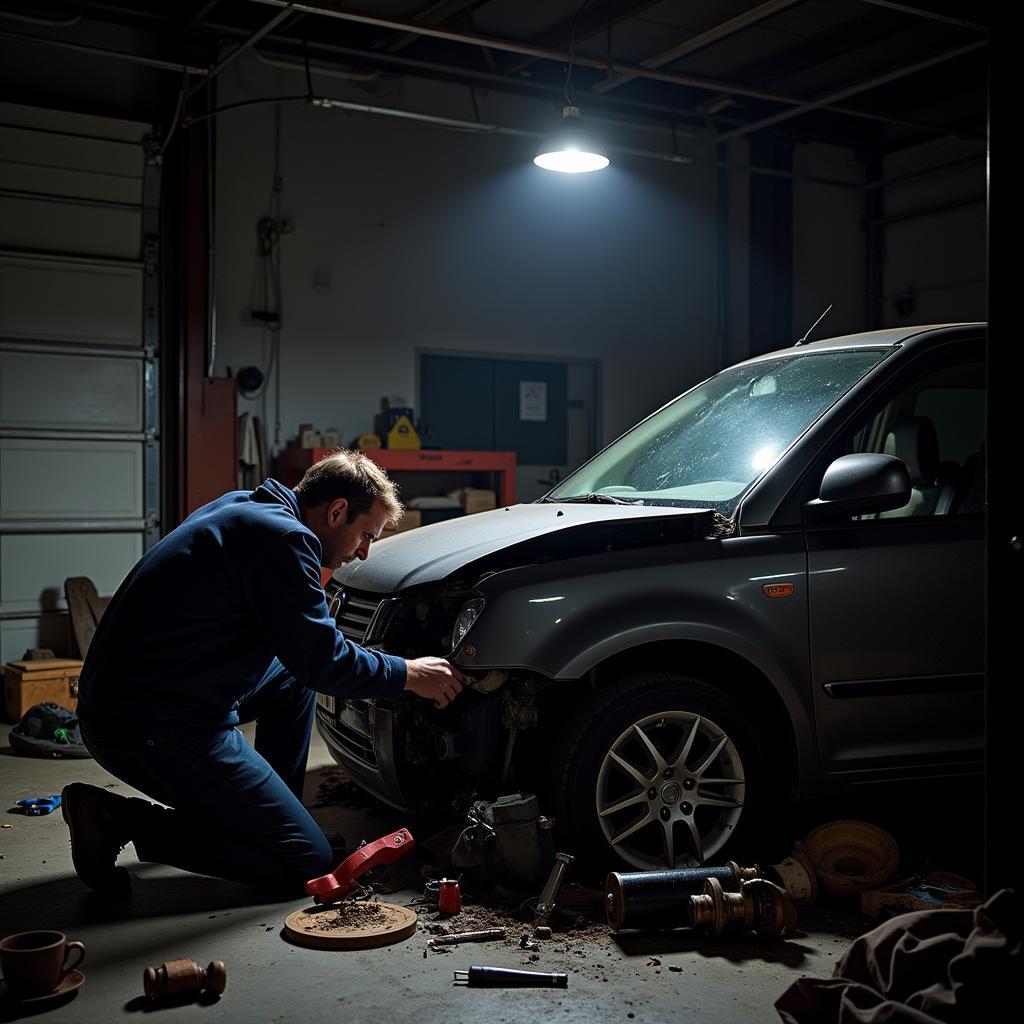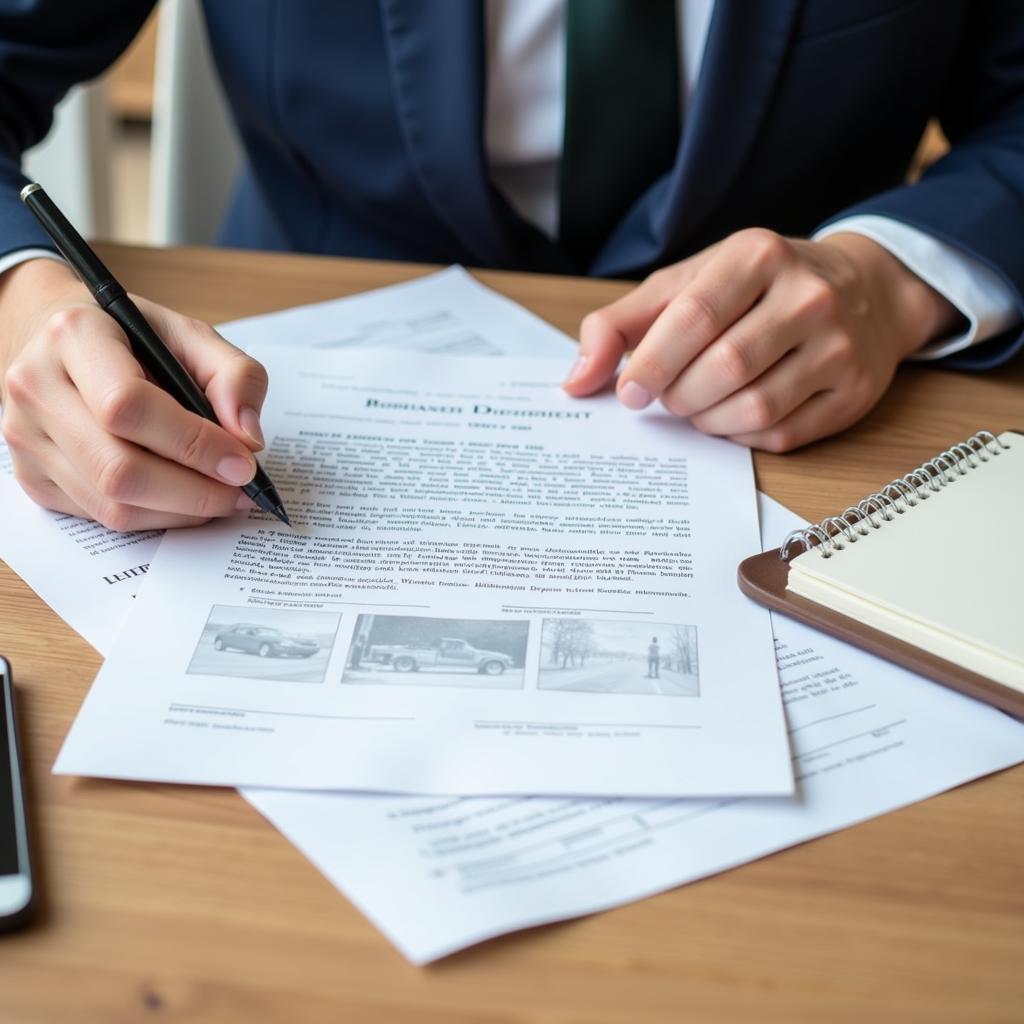Imagine this: you’re stopped at a red light, patiently waiting for it to turn green. Suddenly, you feel a jolt and hear the screeching of tires. You’ve been rear-ended. While frustrating, this scenario is all too common. Understanding the specifics of accidents where a stationary vehicle is hit while stopped, particularly at a traffic light, can be crucial for insurance claims, legal proceedings, and even personal safety awareness.
Determining Fault in a No-Movement Accident
In many cases, determining fault in an accident where one car was completely stopped is straightforward. The driver who rear-ended the stationary vehicle is usually considered at fault. This is based on the fundamental driving principle of maintaining a safe following distance and being aware of your surroundings.
However, there can be exceptions. Here are some factors that might influence the determination of fault:
- Distracted Driving: If the driver who rear-ended the stopped car was texting, adjusting the radio, or otherwise not paying attention, their negligence would be a primary factor in assigning blame.
- Speeding: Even if the car in front was stationary, excessive speed by the rear-ending vehicle demonstrates a lack of control and amplifies the impact and potential damage.
- Weather Conditions: Slippery roads due to rain, snow, or ice can make it difficult to stop in time, potentially mitigating the fault of the driver who rear-ended the stopped car. However, drivers are expected to adjust their speed and following distance to account for adverse conditions.
- Mechanical Failure: In rare cases, a sudden and unforeseen mechanical failure, such as brake failure, could contribute to the accident.
 Mechanic inspecting a car after an accident
Mechanic inspecting a car after an accident
Documenting the Accident: Essential Steps
Regardless of the circumstances, if you’re involved in an accident where you were hit while stopped, it’s vital to take immediate steps to document the situation:
- Ensure Safety: First and foremost, check for injuries to yourself and any passengers. If possible, move your vehicle to a safe location away from traffic.
- Contact Authorities: Call the police to report the accident. This is especially important for insurance purposes and creating an official record of the incident.
- Gather Information: Exchange information with the other driver(s) involved. This includes names, contact details, insurance information, and vehicle details.
- Document the Scene: Take photos and videos of the accident scene, including damage to all vehicles, the surrounding area, traffic signals, and any visible injuries.
- Witness Statements: If there were any witnesses, obtain their contact information. Their accounts can be valuable in corroborating your version of events.
Legal and Insurance Implications
After a car accident, especially when you believe you were not at fault, understanding your legal rights and navigating the insurance process is essential. Here’s a brief overview:
- No-Fault States: In some states, known as “no-fault” states, drivers typically turn to their own insurance companies for coverage after an accident, regardless of who was at fault.
- At-Fault States: In other states, the at-fault driver’s insurance company is generally responsible for covering damages and medical expenses.
- Legal Representation: If you believe the accident was not your fault and you’re facing difficulties with insurance claims or potential legal action, consulting with a personal injury attorney is highly recommended. They can help protect your rights and guide you through the process.
 Reviewing legal documents after a car accident
Reviewing legal documents after a car accident
Preventing Rear-End Collisions: Tips for Drivers
While you can’t control the actions of other drivers, there are steps you can take to minimize the risk of being rear-ended, even while stopped:
- Safe Stopping Distance: Always maintain a safe following distance, especially at traffic lights or stop signs. A good rule of thumb is the “three-second rule.”
- Be Aware of Surroundings: Pay attention to the cars behind you. If you notice a vehicle approaching too quickly or erratically, be prepared to react.
- Defensive Driving: Anticipate potential hazards and be ready to take evasive action if needed.
Being involved in a car accident, even when you’re stopped, can be a stressful experience. By understanding your rights, documenting the incident properly, and practicing safe driving habits, you can navigate the aftermath more effectively and potentially prevent similar situations in the future.

Leave a Reply